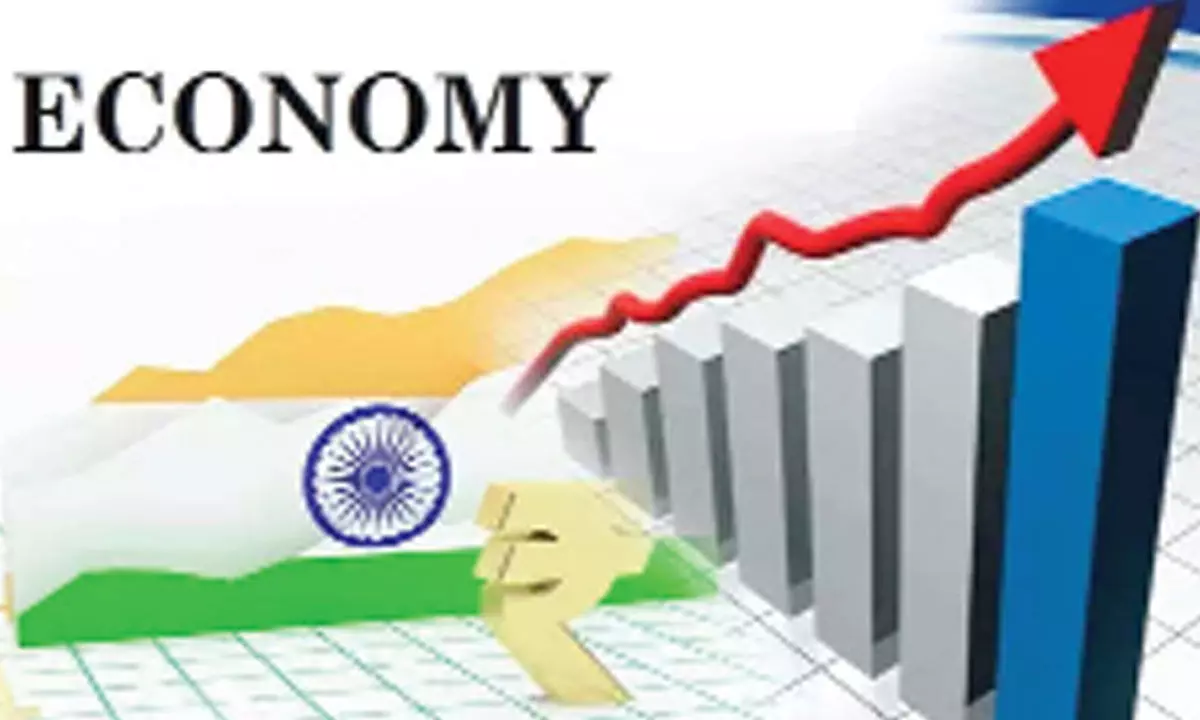You are wrong Mr Rajan! India has outpaced the ‘Hindu Rate’
The entire world is caught in the high interest rates phenomenon because of the aggressive posture adopted by the central banks to tackle inflationary pressures
image for illustrative purpose

Former Reserve Bank governor Raghuram Rajan has recently expressed concern over the state of the Indian economy. He has cautioned that the country is hovering ‘dangerously close’ to the Hindu rate of growth. The reference is to the average growth rate of 3.5 to four per cent that was the norm for several decades after independence. It was only in the 1980s that the pace of growth accelerated to around five or six per cent. The term ‘Hindu rate of growth’ was coined by economist Raj Krishna .
Rajan’s comments reflect his view that the economy is not recovering rapidly enough from the crisis of the pandemic. In his interview, he points to the sequential slowdown in quarterly growth as given in the data released last month by the National Statistical Office. It revealed that the gross domestic product (GDP) in the third quarter of the current fiscal (October to December 2022) was estimated at 4.4 per cent, down from 6.3 per cent in the second quarter (July – September 2022) and 13.2 per cent in the first quarter (April- June 2022). The growth in the third quarter of 2021-22 was 5.2 per cent.
Rajan went on to add that a comparison with the third quarter in the pre-pandemic period three years ago would put the average annual growth in the third quarter at 3.7 per cent. He felt there was little scope for optimism given the fact that private sector investment had failed to pick up, interest rates remained high and global growth was slowing down.
What is interesting about the former RBI governor’s comments are that these projections seem to have been made on the basis of data for a relatively short span of time. It must be recalled that the term ‘Hindu rate of growth’ was used to describe an average growth rate over several decades from the 1950s to the 1970s. Rajan, on the other hand, has reached his conclusion after considering only data for the past year. While there is no doubt that head-winds do exist for the economy, there are also no doubts that the outlook is far more positive than has been outlined in his latest commentary.
Even the State Bank of India (SBI) in its latest research report has described Rajan’s views as ‘ill-conceived’, while stressing that the economy is on a sound footing. One of the significant factors it mentions in this context is the rising trend in Incremental Capital Output Ratio (ICOR), which measures the additional unit of capital needed to produce an additional unit of output. The report noted that ICOR which was 7.5 in fiscal 2022 was now only 3.5 in fiscal 2022. Clearly, it pointed out, only half of capital is now needed for the next unit of output.
The other important indicator highlighted by the SBI has been the rise of gross capital formation by the government to 11.9 per cent in 2021-22. It argued that this has had a domino effect on private investment that rose from 10 to 10.8 per cent over the same period.
As far as high interest rates are concerned, this phenomenon prevails around the world as central banks have been aggressive in order to deal with inflationary pressures. India has been able to manage the situation relatively better than most developed countries as inflation is now only slightly higher than the tolerance band of two to six per cent fixed by the RBI. Retail inflation had moderated to 5.7 per cent in December and rose to 6.5 per cent in January.
As for the slowdown in the global economy, it has also affected countries across the board. India, in fact, has been able to insulate itself better from the repercussions of geopolitical events like the Ukraine conflict owing to a rebound in domestic consumption. Most key indicators have been showing an upward trend, including revenue inflows from the Goods and Services Tax (GST), which are touching Rs. 1.5 lakh crore per month. Similarly, automobile demand has been buoyant with passenger vehicles sales growing by 22 per cent in January year on year. Petroleum products consumption has also gone up in the same month with diesel sales rising by 12. 6 per cent and petrol by 14.2 per cent.
It cannot be denied, however, that sluggish demand in the world economy has affected the pace of merchandise exports which have plateau-ed in recent months. Even so, combined merchandise and services exports are set to reach record levels in 2022-23, according to Union Commerce Minister Piyush Goyal. He has declared that these are expected to cross $760 billion this fiscal despite the global economic uncertainties. This is on the back of an all-time high of $676 billion worth of total exports in 2021-22.
The picture is thus a far brighter one than outlined by Rajan. India remains the fastest growing major economy in 2022-23 with the growth rate expected to be in the region of seven per cent. It is likely to moderate in fiscal 2024 but the outlook for the next year is predicted to be brighter.
Global rating agencies like Moody’s, for instance, project 5.5 per cent growth for FY 2024 but look forward to 6.5 per cent in FY 2025. Similarly, S&P Global has projected growth at 6.5 and 6.7 per cent for these two years. In other words, the country is far from the so-called Hindu rate of growth, even going by estimates of international agencies.
In fact, India has been an outlier in the world economy recovering more rapidly from the pandemic and geopolitical developments than many in the developed world. The former RBI governor may thus need to revise his assessment of the outlook for the Indian economy.

